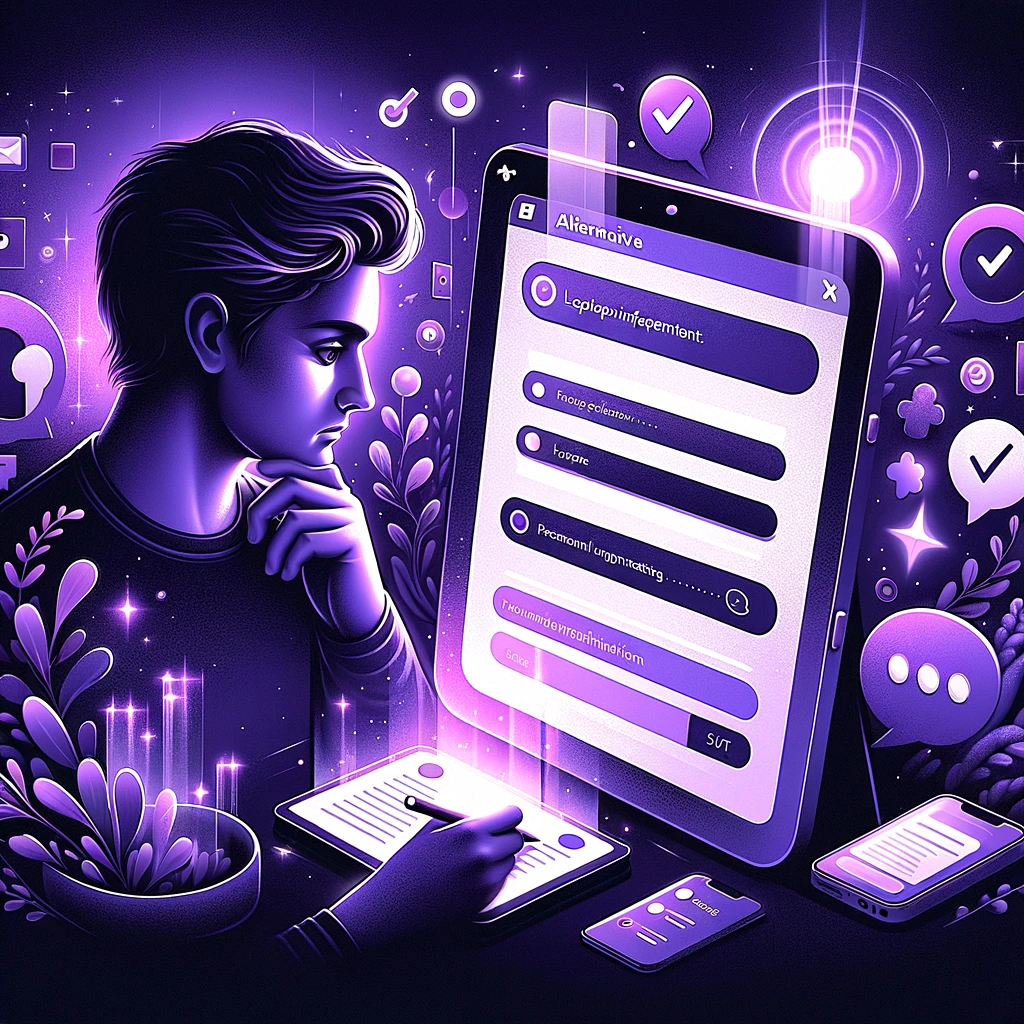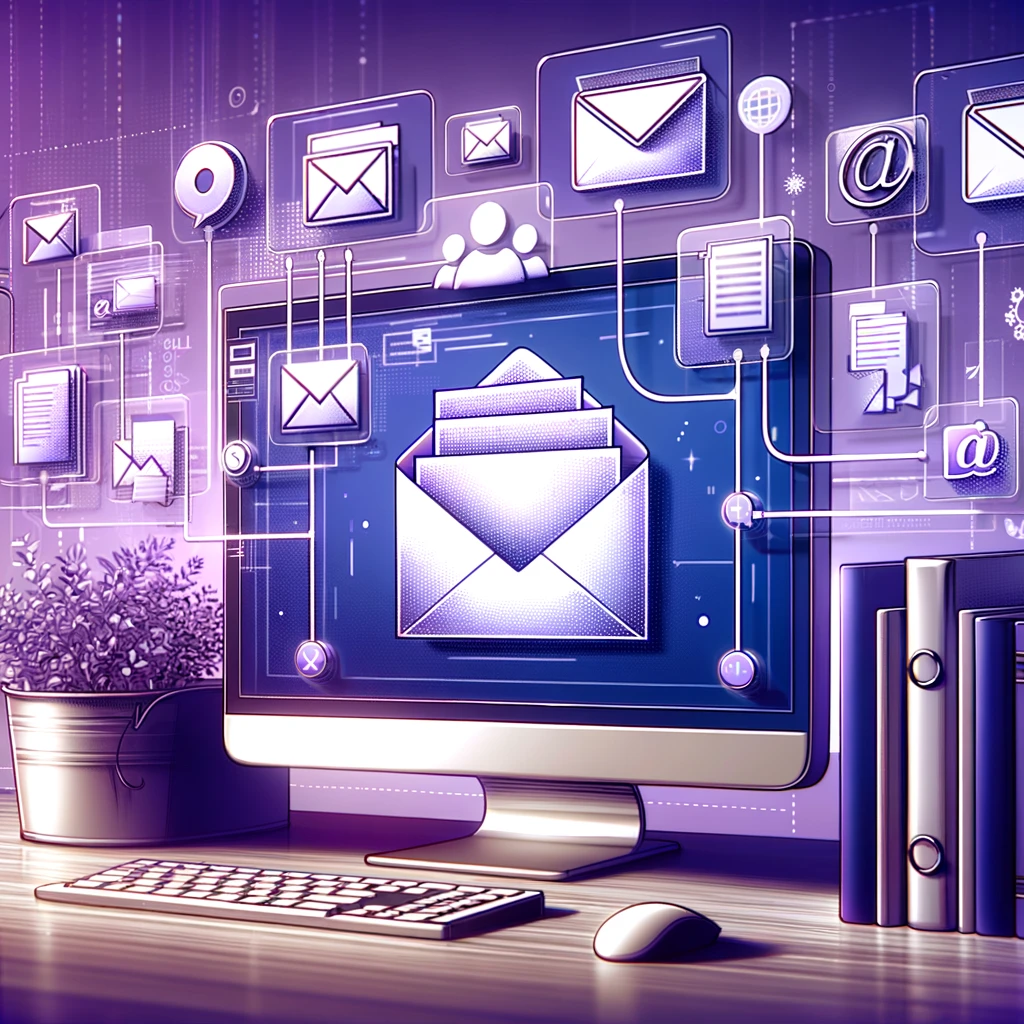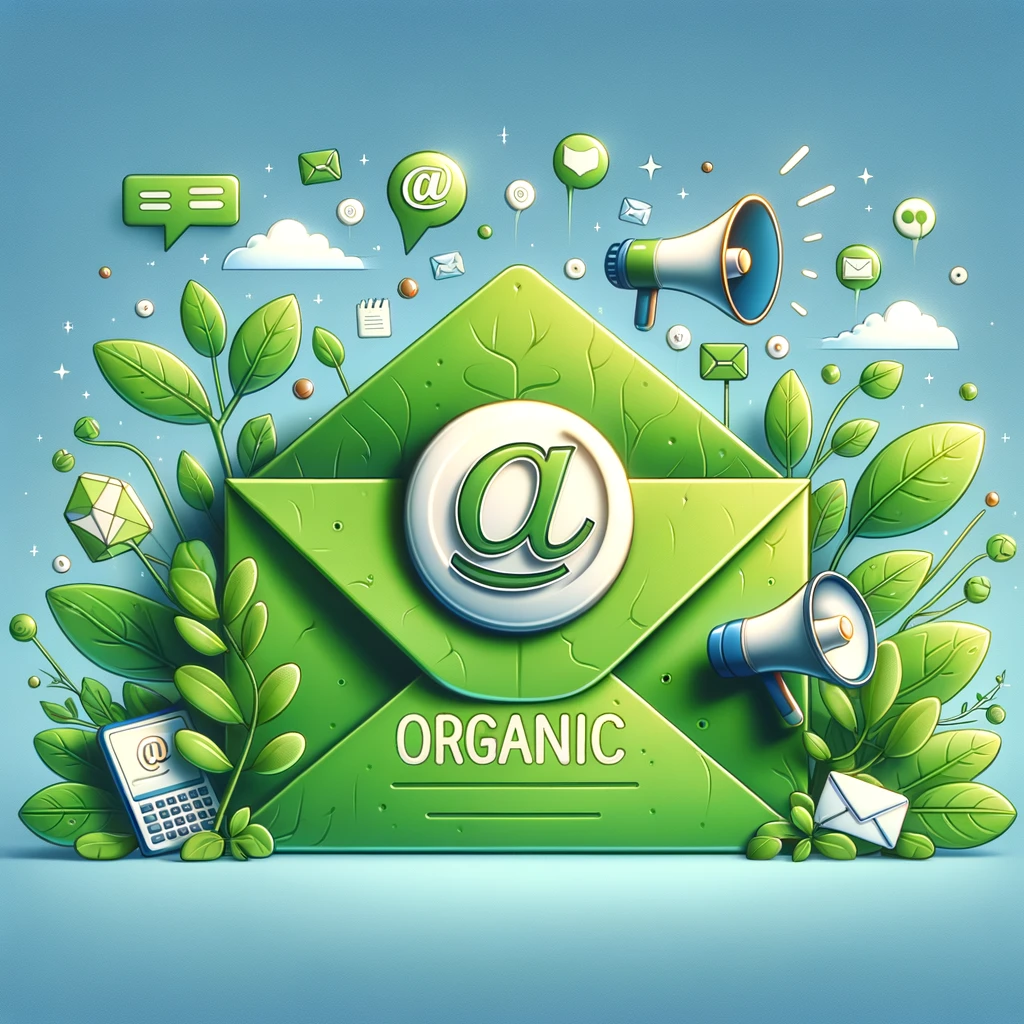
Reignite the Fire with Inactive Customers
Whether you’re completing a brand overhaul or launching a new product, you should always have a reactivation email campaign working to win back old customers and keep them engaged.
As John Russell, President of Harley-Davidson, once said: ‘The more you engage with customers, the clearer things become and the easier it is to determine what you should be doing.’ When running your business, your efforts must be customer-centric, from first visit through post-purchase, to rise above the rest. Not only does the customer benefit from your investment in maintaining the relationship, over time your bottom line benefits as well.
One of the most important things to remember though is that your work is not done once you’ve made initial contact in the inbox. Beyond your welcome email, promotional offers, and confirmations, many businesses often underestimate the benefits to continued outreach to their broader customer base.
Like any relationship, a healthy amount of patience and communication is necessary. This is the point where reactivation emails come into play.
This type of email is useful after a certain period of inactivity within your list. Customers with an ‘inactive’ status could be nonresponders, non-clickers, or non-purchasers. Inactive could also include customers who haven’t made a purchase in a while, or those who only subscribe to your company’s newsletter.
Thinking about it from a statistics perspective, branding insights firm MarketingSherpa recently found that 75% of email subscribers become inactive within a year. This shows how critical it is to add a reactivation email campaign to your communication plan. It helps keep the fire going.
There are many ways to reconnect with customers. It’s not a one-size-fits-all mission. The easiest way is the direct “we miss you and want you back” email. This simple and straightforward approach is an excellent way to ensure your subscriber list is up to date and CAN-SPAM compliant.
In the ‘we miss you’ example below, New Hampshire-based dairy farm Stonyfield gives inactive subscribers the choice to either stay in touch or discontinue receiving communication altogether.
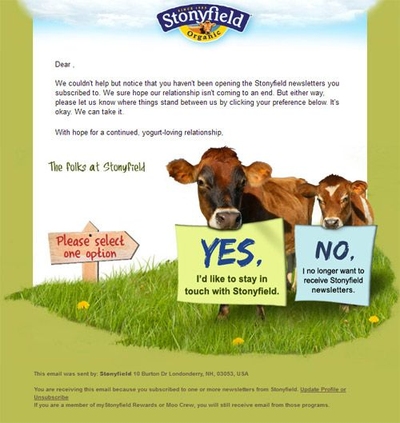
Find a way to offer customers the opportunity to remember how much they loved your company when they first engaged with it. From there, focus on the ones who want to stay engaged and can potentially grow with you
In this next example, children’s retailer Carter’s combines “we miss you” with a time sensitive offer in one email. This does a good job of enticing the customer by letting them know about the store’s current inventory. It conveys how long the offer will last and prompts a call-to-action (CTA).
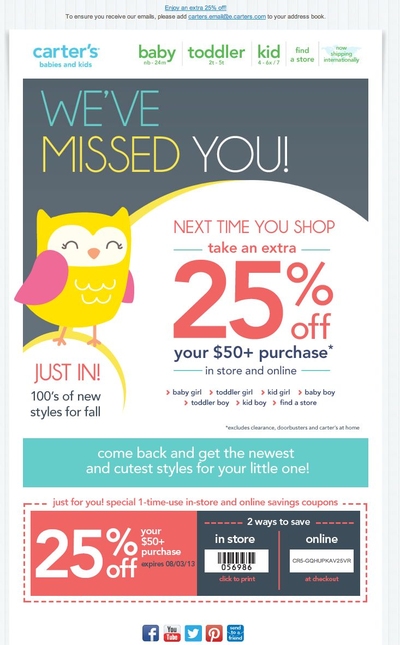
Whether you design your reactivation email to confirm continued communication or inspire another purchase, it’s well worth the effort to keep customers engaged.
Consider this: In 2012, the Direct Marketing Association reported how much more cost-effective it was to cultivate existing customers versus acquiring new ones. It found the median return on investment for existing customers was $28.50, compared to a mean customer acquisition cost of $55.24.
In summary: reactivating customers pays off.
Going back to John Russell’s quote, a reactivation email focuses you on the right customers. By keeping an ongoing dialog, you create a valuable relationship and an exemplary customer experience.
Have you recently tried to re-engage a contact list? Tell us about your results.
Want more email marketing tips like these? Sign up for VerticalResponse’s VR Buzz weekly newsletter.
© 2015 – 2016, Contributing Author. All rights reserved.
